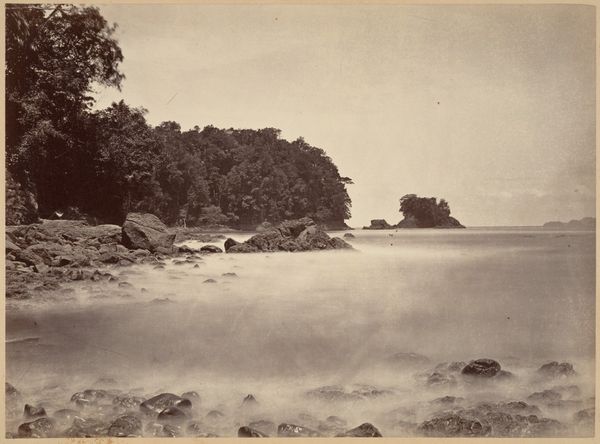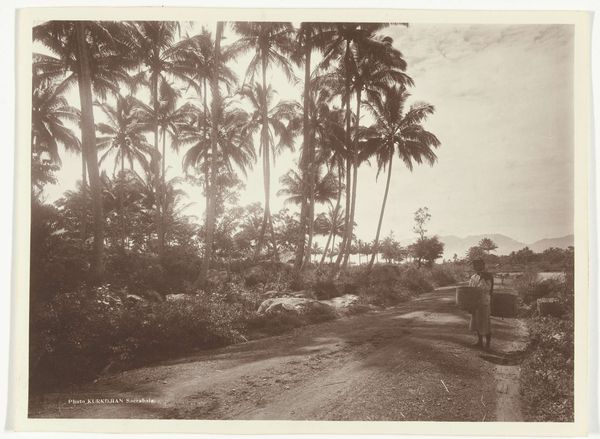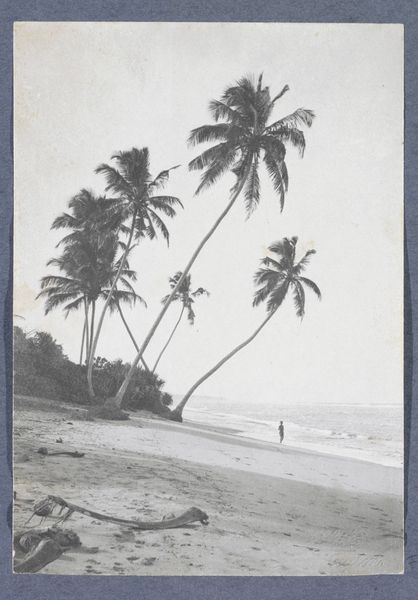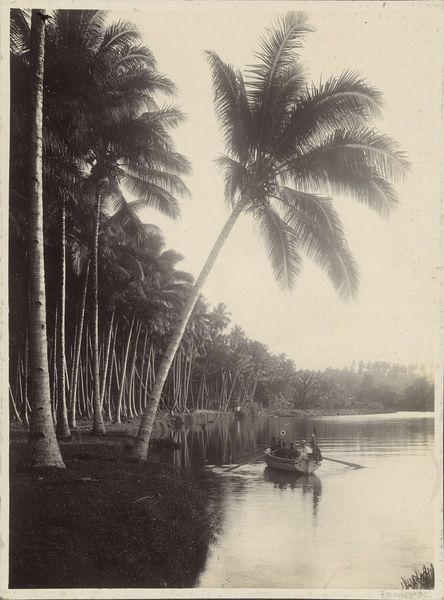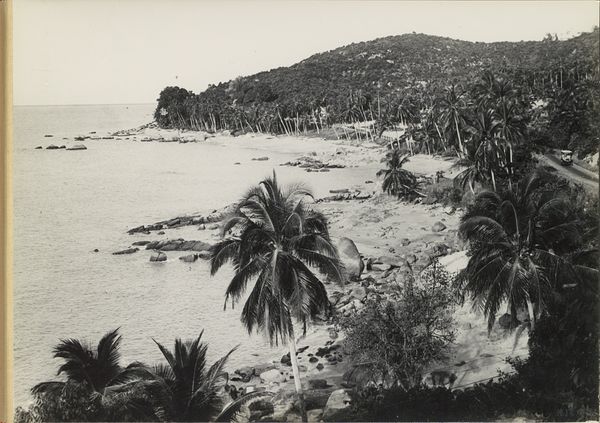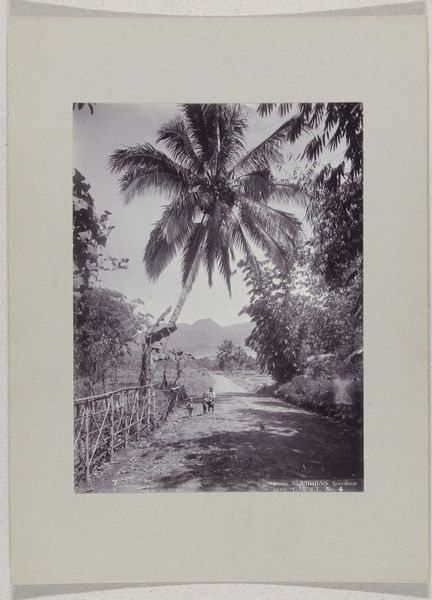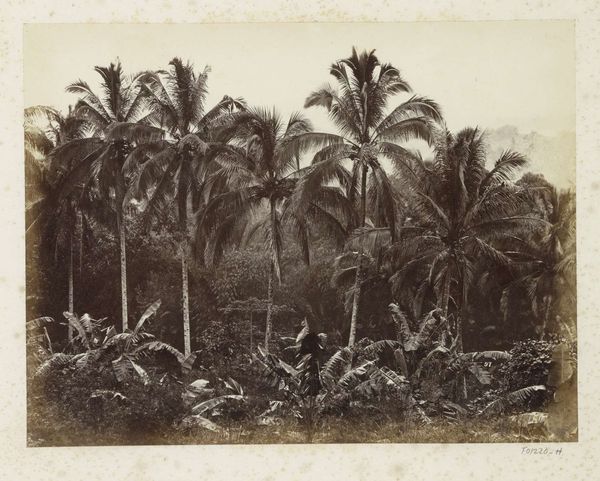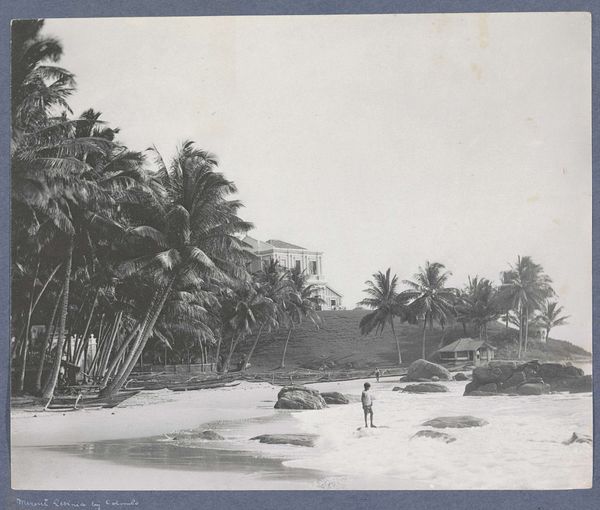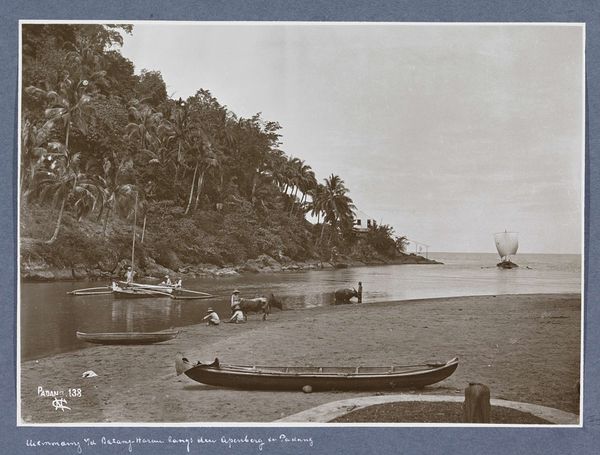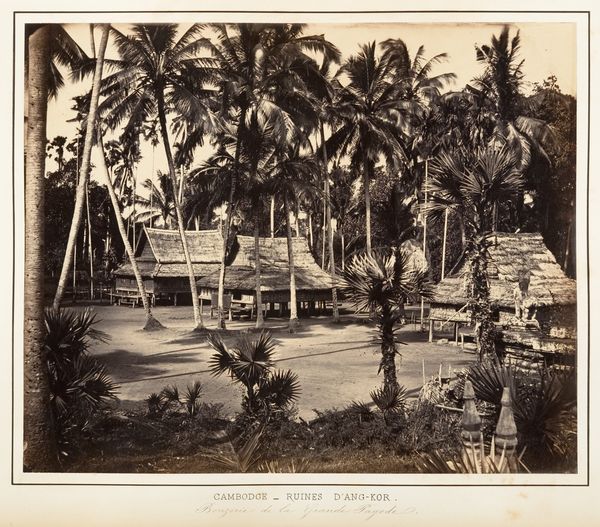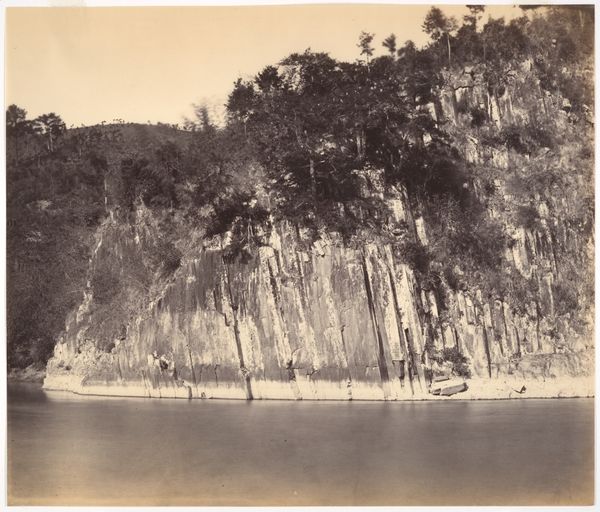
photography, gelatin-silver-print
#
pictorialism
#
landscape
#
photography
#
orientalism
#
gelatin-silver-print
#
realism
Dimensions: height 175 mm, width 240 mm
Copyright: Rijks Museum: Open Domain
Curator: This is "Strandgezicht in Nederlands-Indië," or "Beach View in the Dutch East Indies," a gelatin-silver print created around 1912 by Onnes Kurkdjian. Editor: It's remarkably serene. The muted tones give it this timeless quality, and yet there's a certain tension with the darker foreground contrasting the airy scene beyond. Curator: Kurkdjian's focus during his time in the Dutch East Indies allows for examining the colonial gaze through the very tangible materials used. The gelatin-silver process was quite established by this time, facilitating mass production. Considering his subjects are the local population amidst this landscape, how does the material process inform or perhaps distort our view of the reality captured? Editor: I find myself thinking about the composition. The palm tree almost bisects the scene, creating distinct zones of activity and inactivity, drawing my eye from the immediate daily life toward the horizon. This type of staged presentation reminds me of colonial-era exhibitions aiming to illustrate exotic locales and inhabitants for a European audience. Curator: Precisely! These photographs entered circulation, forming perceptions back in Europe. The ‘Orient’ was not just a geographic space, but also a visual commodity produced through such means. Do we see an active interrogation of power dynamics or a reiteration of existing hierarchies? What does this artwork *do* culturally? Editor: The "pictorial" elements are worth mentioning. Note the careful placement of figures. The family near the beached boat contrasts starkly with the children in the waves. It’s designed, not just 'found.' The very act of framing these people and their environment served a particular ideological role within a historical narrative. Curator: Yes, but it's the granular materiality—the specific photographic chemicals, papers, and distribution networks—that brought those ideological concerns into tangible existence. Editor: Examining the reception and political charge of these images among European audiences at the time, and their afterlives in constructing colonial identities, is just as significant as understanding the "what" and "how" they depict or were made. They become active participants in empire-building. Curator: Absolutely, it gives a wider reading of material practices embedded in social structure, doesn’t it? I see this work and then the means of power manifest in visual media become that much clearer. Editor: Indeed. It compels a critical assessment not only of art but of ourselves and the social narratives we continue to perpetuate or challenge.
Comments
No comments
Be the first to comment and join the conversation on the ultimate creative platform.
